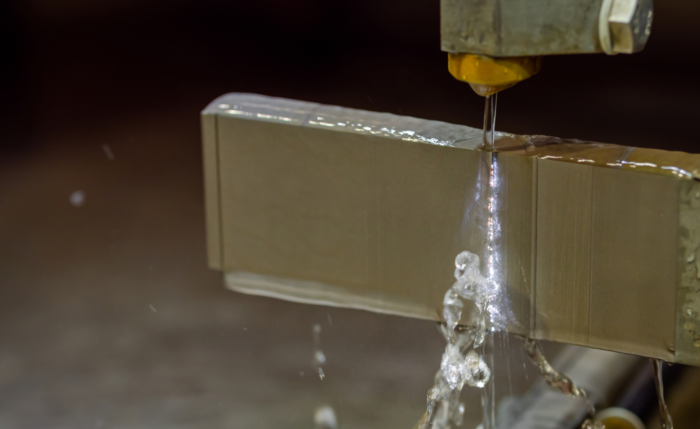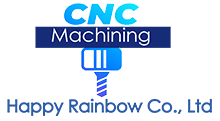EDM vs CNC Machining
When and how to use EDM (electrical discharge machining)
EDM, or Electrical Discharge Machining, is a specialized process used for producing parts with intricate shapes. It works by running an electrical current between two electrodes in a dielectric fluid. This current creates a spark which erodes small amounts of metal from the workpiece in order to achieve the desired shape. EDM is especially useful for making highly detailed parts that could not be achieved through other machining processes. There are two different types of EDM:
Wire EDM:
This type of EDM works by using an electrode which is a thin wire made of brass, that runs through the material to be worked on. This wire then passes through a dielectric fluid, typically deionized water, which causes sparks to form as electricity jumps between them. The sparks created create heat and cause erosion at the points they hit on the material. This process allows for precision cutting and shaping of metal components.
Sinker EDM (or ram EDM):
It involves passing an electric current between two electrodes submerged in an insulating fluid such as oil or dielectric fluid. When the electric current builds up enough voltage, the electrons jump the gap between the two electrodes, creating a spark that melts away metal or other material at its point of contact. This cutting process can be used to create extremely precise parts with intricate details.

Advantages Of Electrical Discharge Machining
EDM results in superior-quality products with complex shapes and tight tolerances. It offers many advantages over other methods of production, such as:
Greater Design Freedom
By pumping an electrical current through an electrode, EDM can precisely remove material and create shapes or depths that may not be achievable with traditional machining processes.
This method works by using electrical sparks to precisely cut materials like steel, titanium, carbide and other metals. It’s highly accurate and helps produce parts with excellent surface finishes. EDM is particularly useful for cutting complex shapes like slots in extrusion dies that are difficult to make by conventional methods.
EDM and CNC machining are both used in manufacturing, but they have different capabilities. EDM is especially good for tight internal corners with small radii, and creating non-round openings and cavities in workpieces. Sinking EDM can be used to create blind and high aspect ratio pockets. CNC machining is also useful for creating intricate shapes, but it is not capable of creating the same level of detail as Micro EDM.
Distortion Free Machining
The main advantage of EDM over computer numerical control (CNC) machining is the lack of distortion. This is because the tools used in EDM do not come into contact with the workpiece itself, meaning that no forces are applied to the material. This results in higher levels of accuracy, making it possible to machine fragile parts without fear of damage and achieving a tolerance of roughly +/- 0.012mm.
High-Quality Surface Finish
EDM involves using electrical sparks to remove high-precision pieces of material extremely accurately, with the resulting surface having a smooth finish. This makes it ideal for applications such as injection molding. On the other hand, CNC machining uses rotating cutting tools to carve away precision parts from raw stock in a highly extensive manner.
High Precision
EDM is often used for producing small scale parts, prototypes, and components with high levels of accuracy and repeatability due to its excellent precision. It is therefore popular in the automotive and aerospace industries. Meanwhile, CNC machining excels when it comes to larger orders involving complex geometries.
Disadvantages Of Electrical Discharge Machining
EDM offers many advantages as compared to traditional mechanical machining. However, there are some drawbacks that should be noted in order to make an informed decision on whether this process is best for the intended application. These drawbacks include:
It Can Only Machine Conductive Materials
It works best with electrically conductive metals, and it generally involves no stress to the metal being cut. However, it’s important to keep in mind that the heat generated by EDM can affect the metallurgy of a nearly completed part.
Material Removal Rate is Very Slow
EDM is not suitable for large-scale projects due to its relatively slow material removal rate, high intensity machining process, and thus the resulting increase in manufacturing time that affects the overall cost.
More Expensive than Conventional Machining
Electronic Discharge Machining (EDM) is a manufacturing method that relies on electricity to cut and shape materials. However, due to its energy-hungry nature, EDM has a large carbon footprint that damages the environment – making it a less desirable option for some companies. As such, other methods of machining which require less electricity are usually preferred in order to reduce their carbon footprint.
Difficulty in Reproducing Sharp Corners on the Workpiece
This method of machining allows for precision cutting and shaping of metal, but it can also lead to the wear and tear of the electrode used in the process. If not managed carefully, this can decay the accuracy of the electrodes, as deposited material can accumulate on sharp corners and low surfaces.
